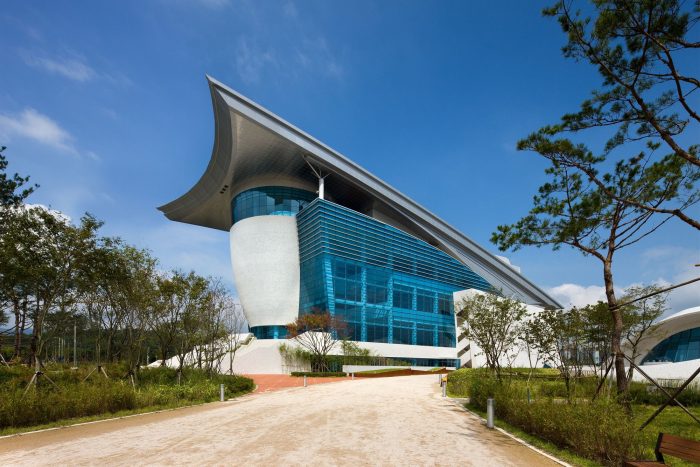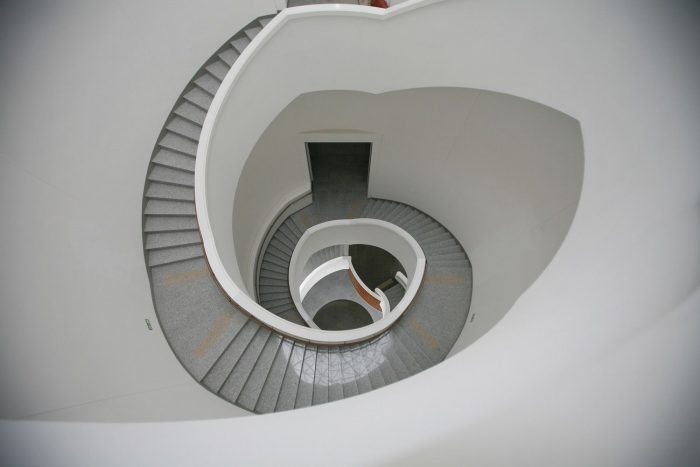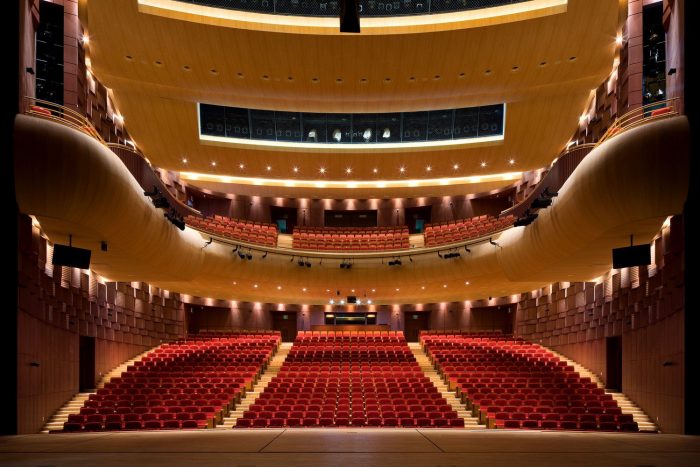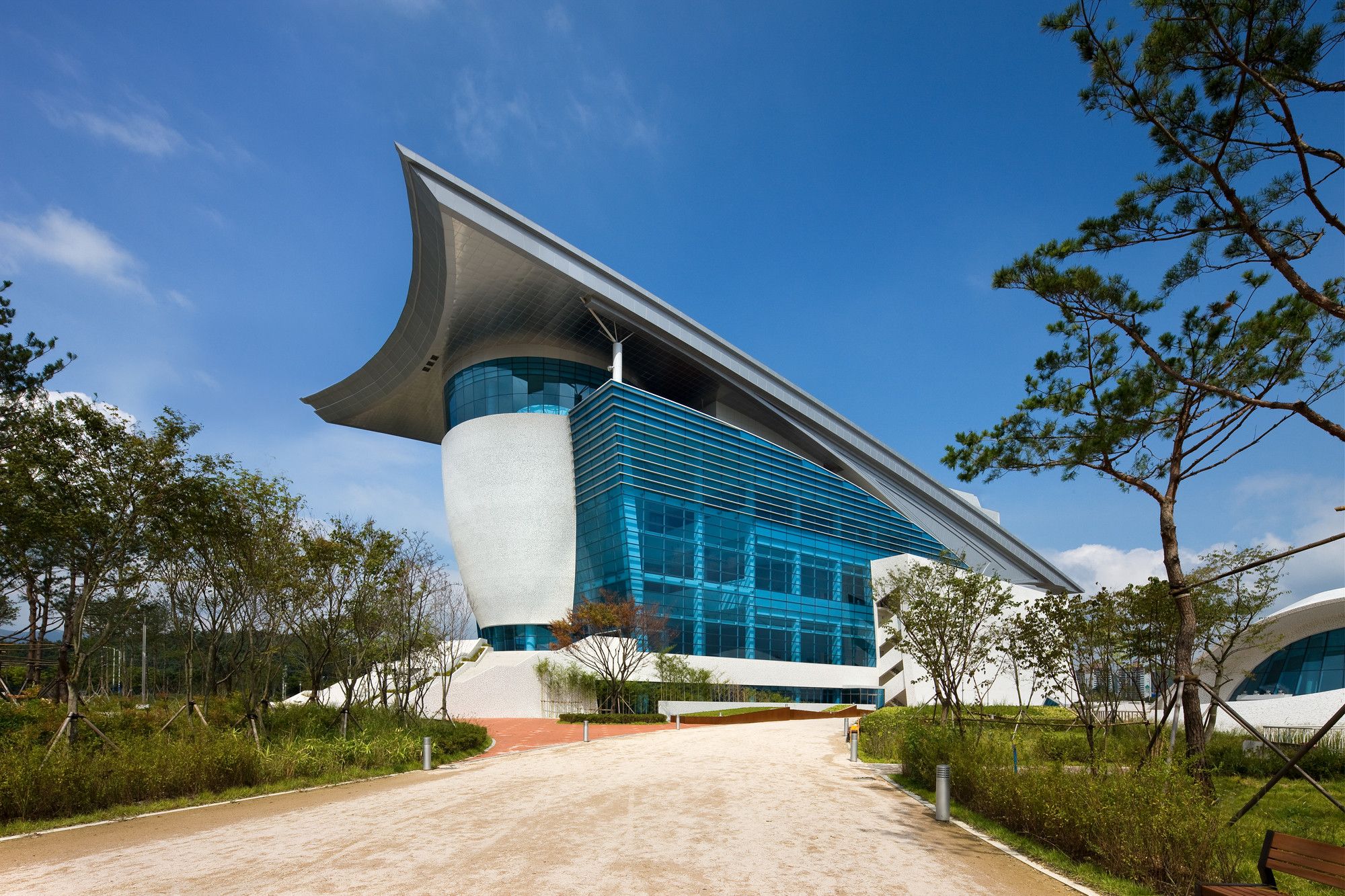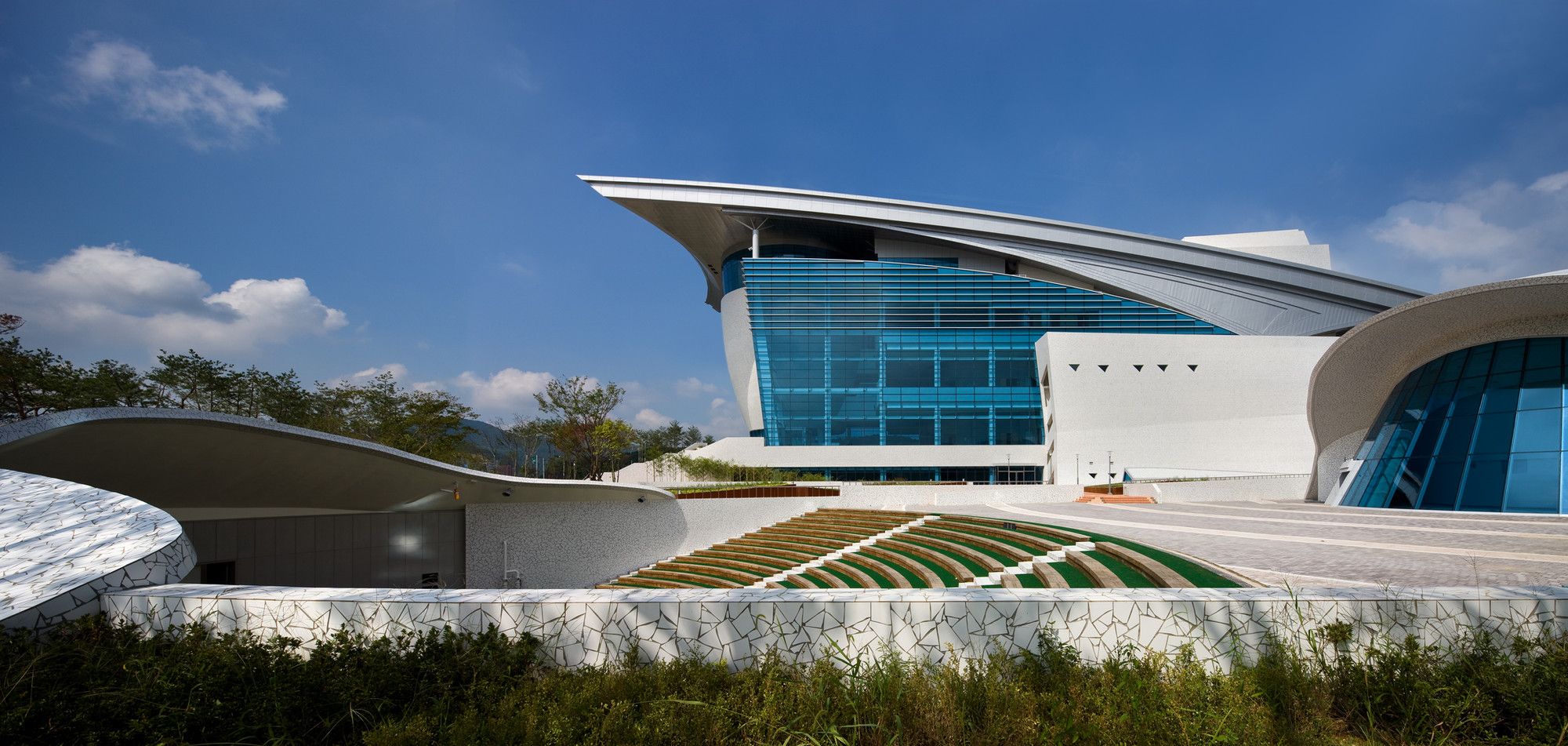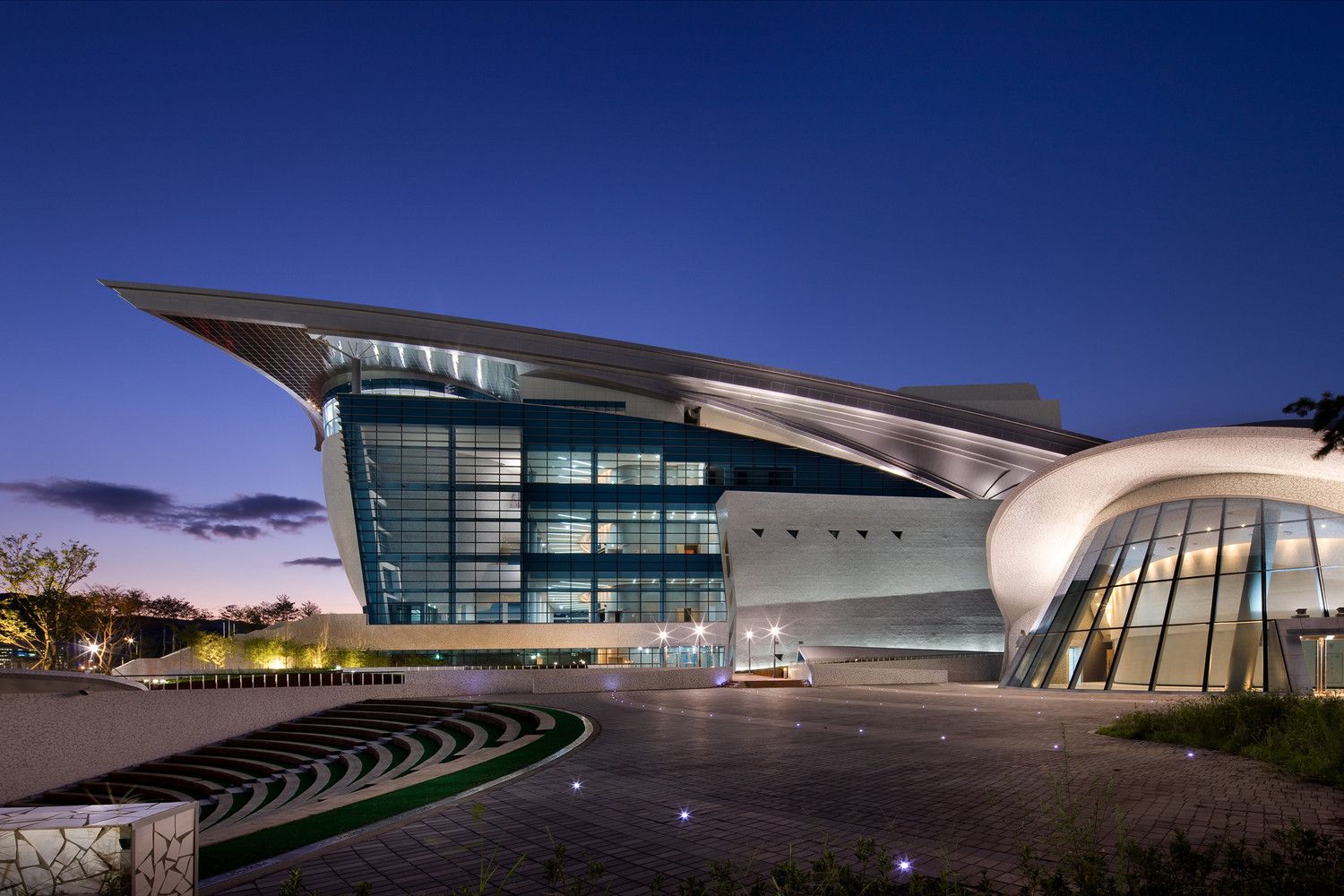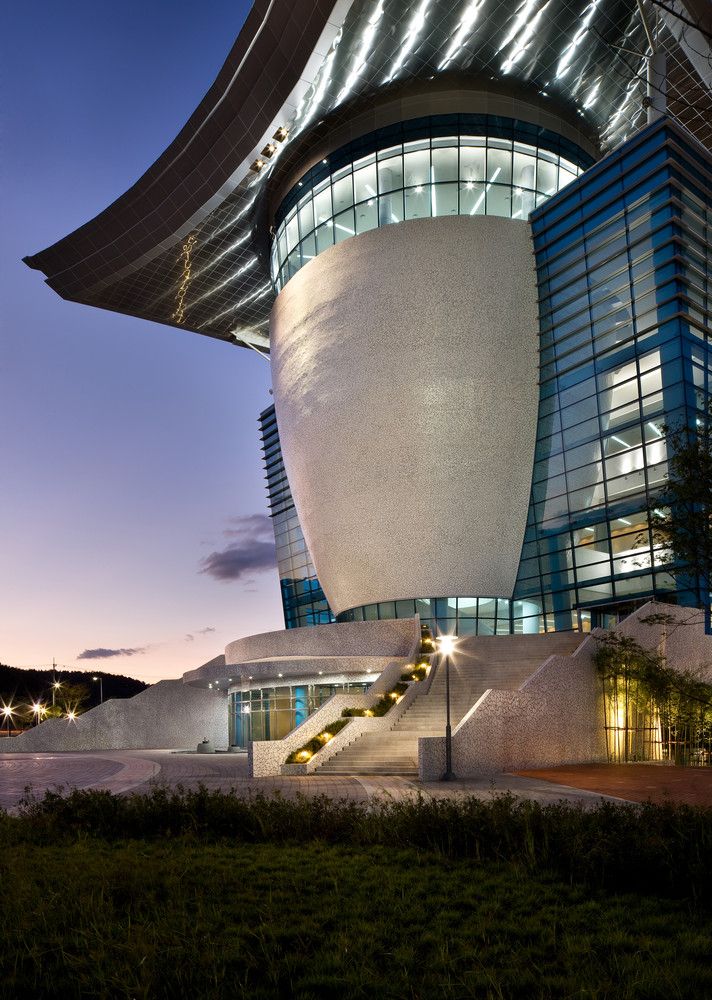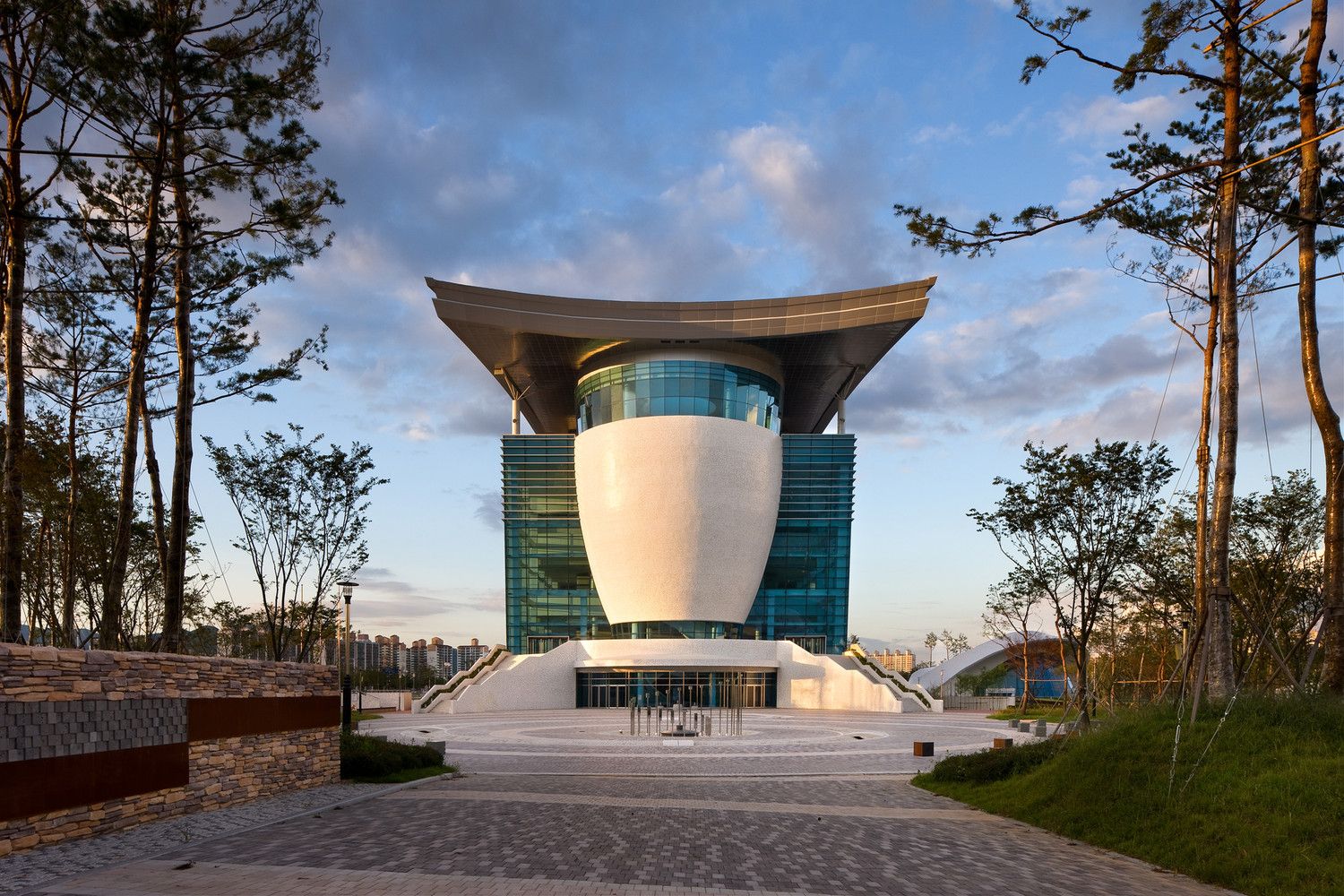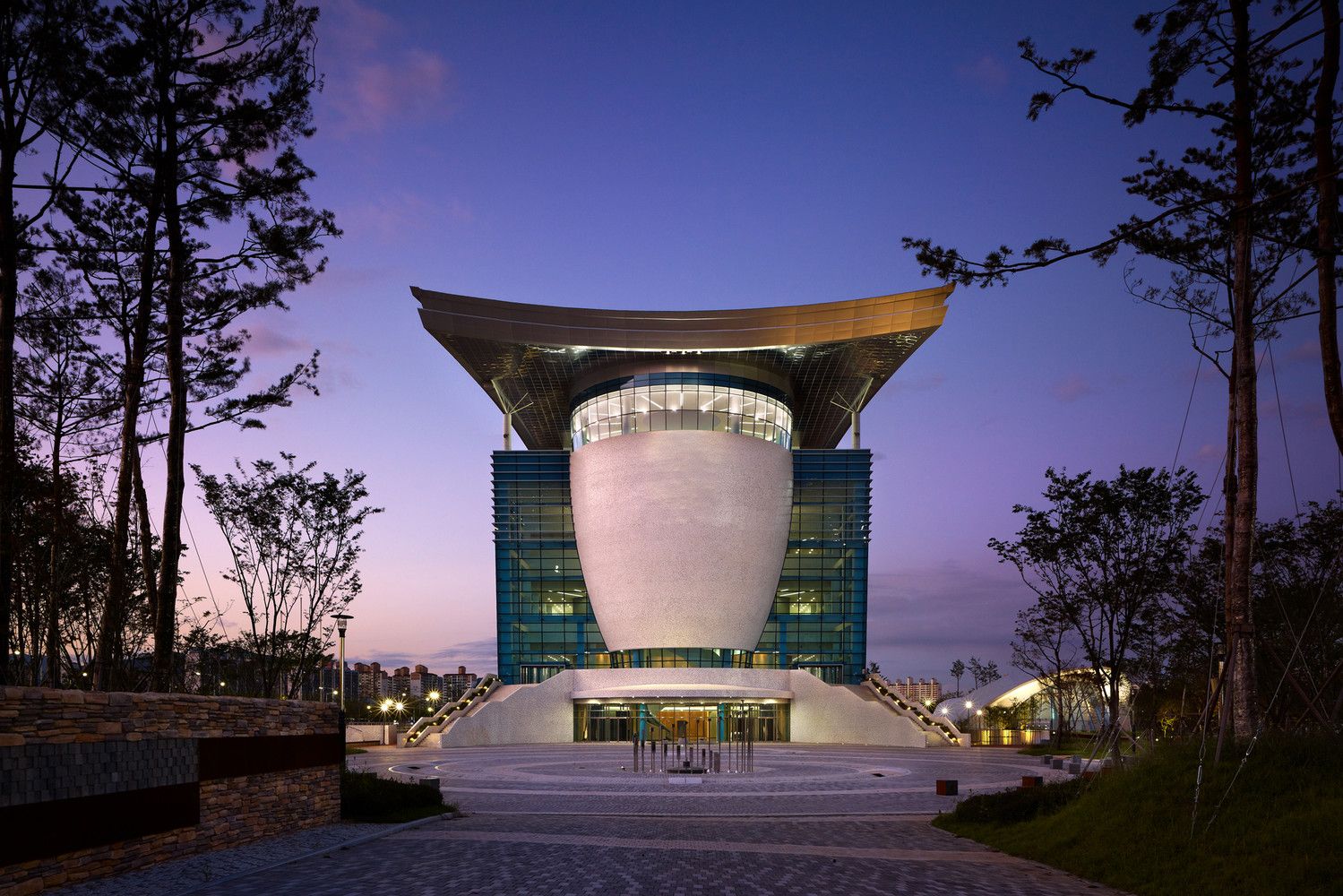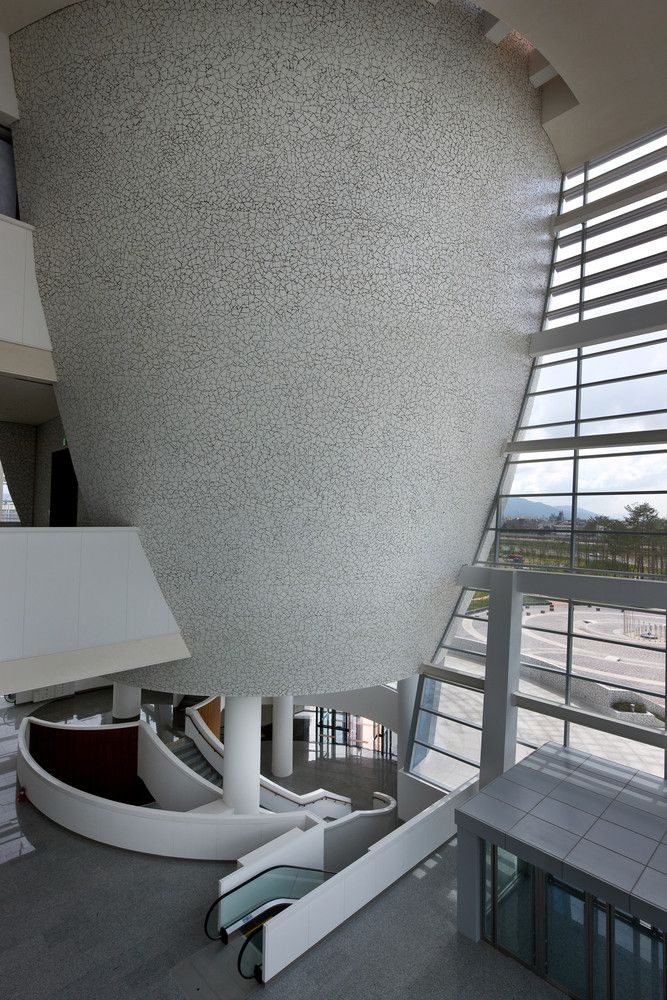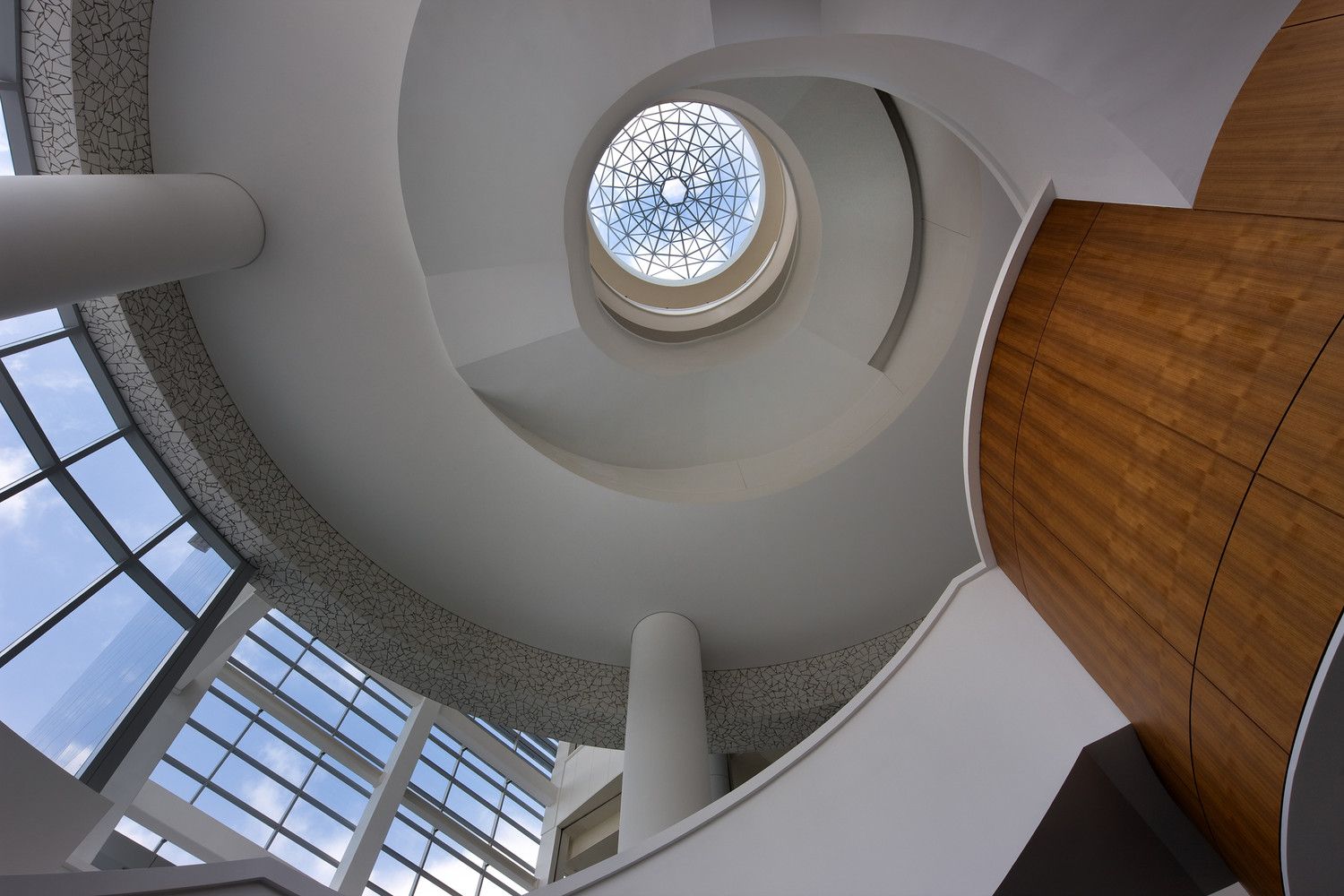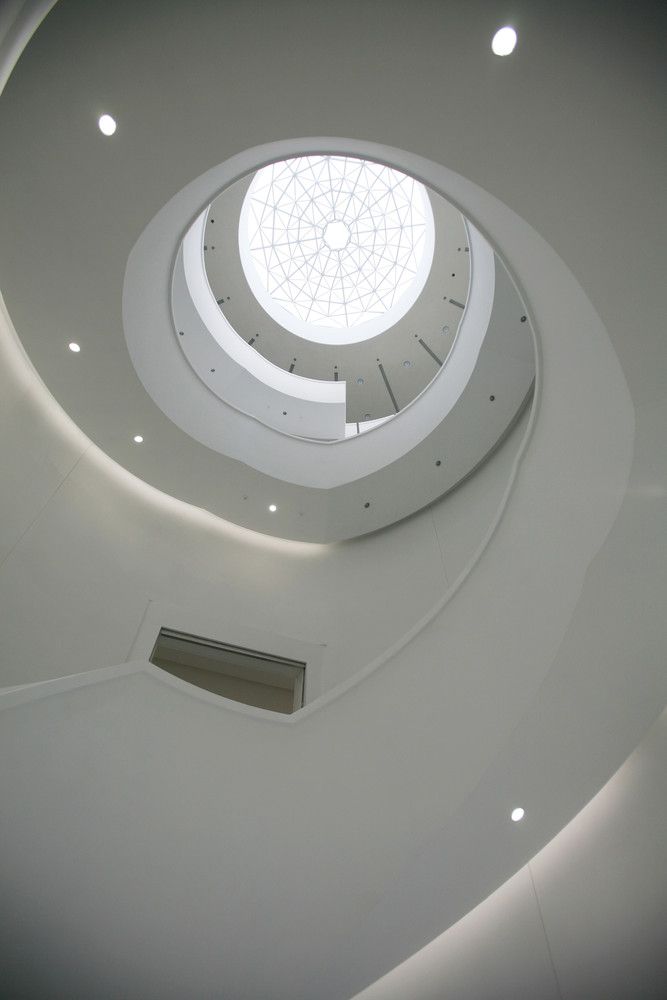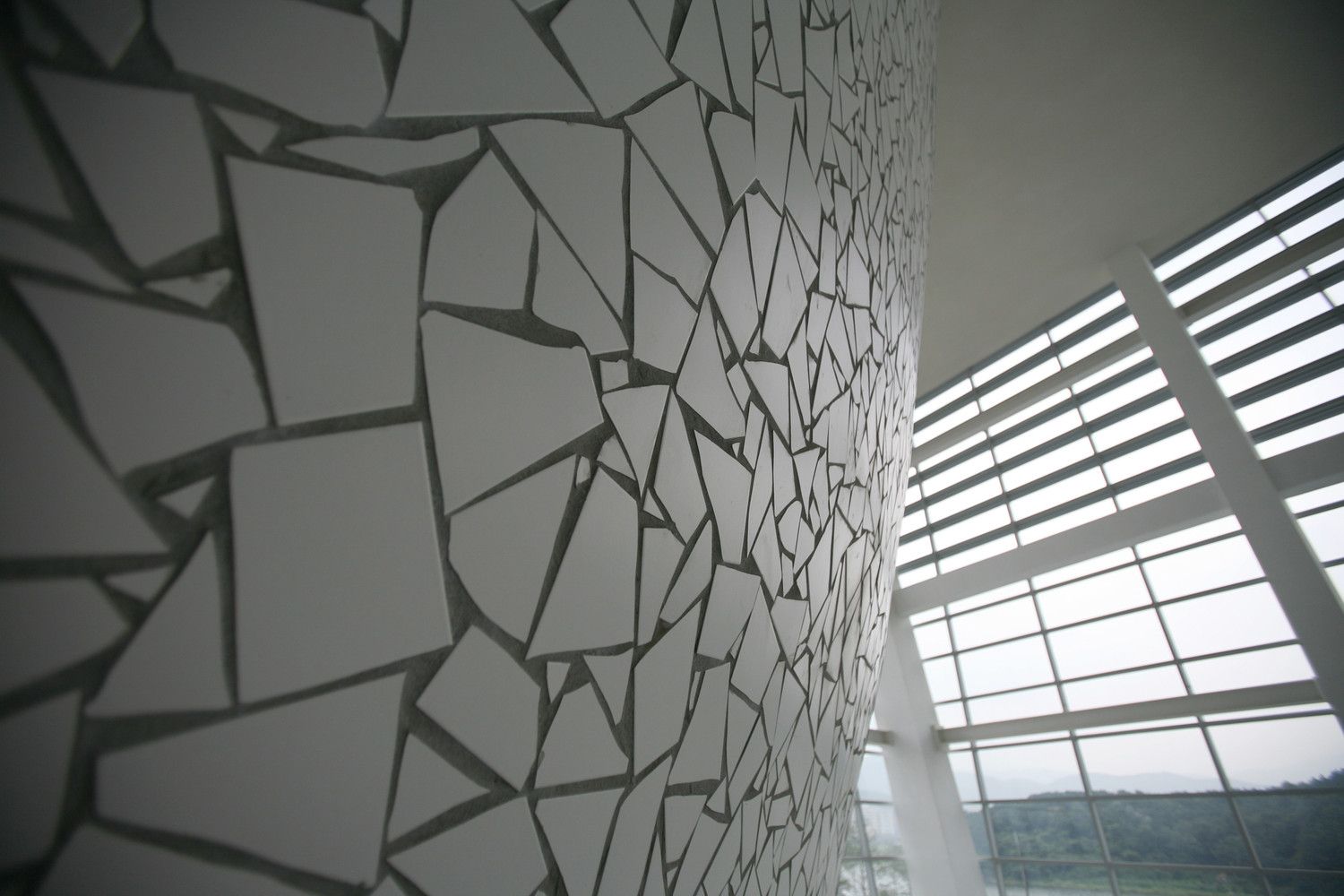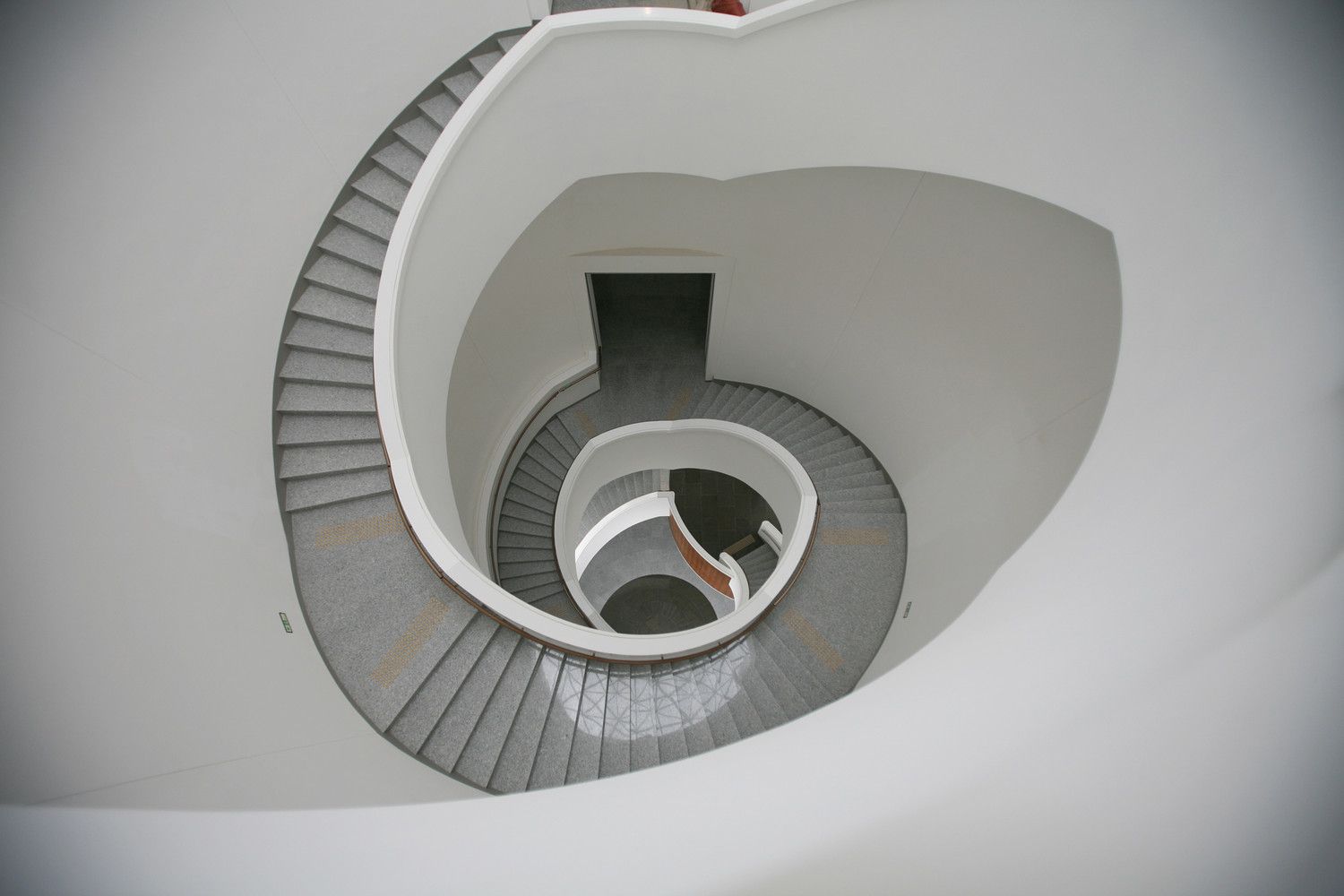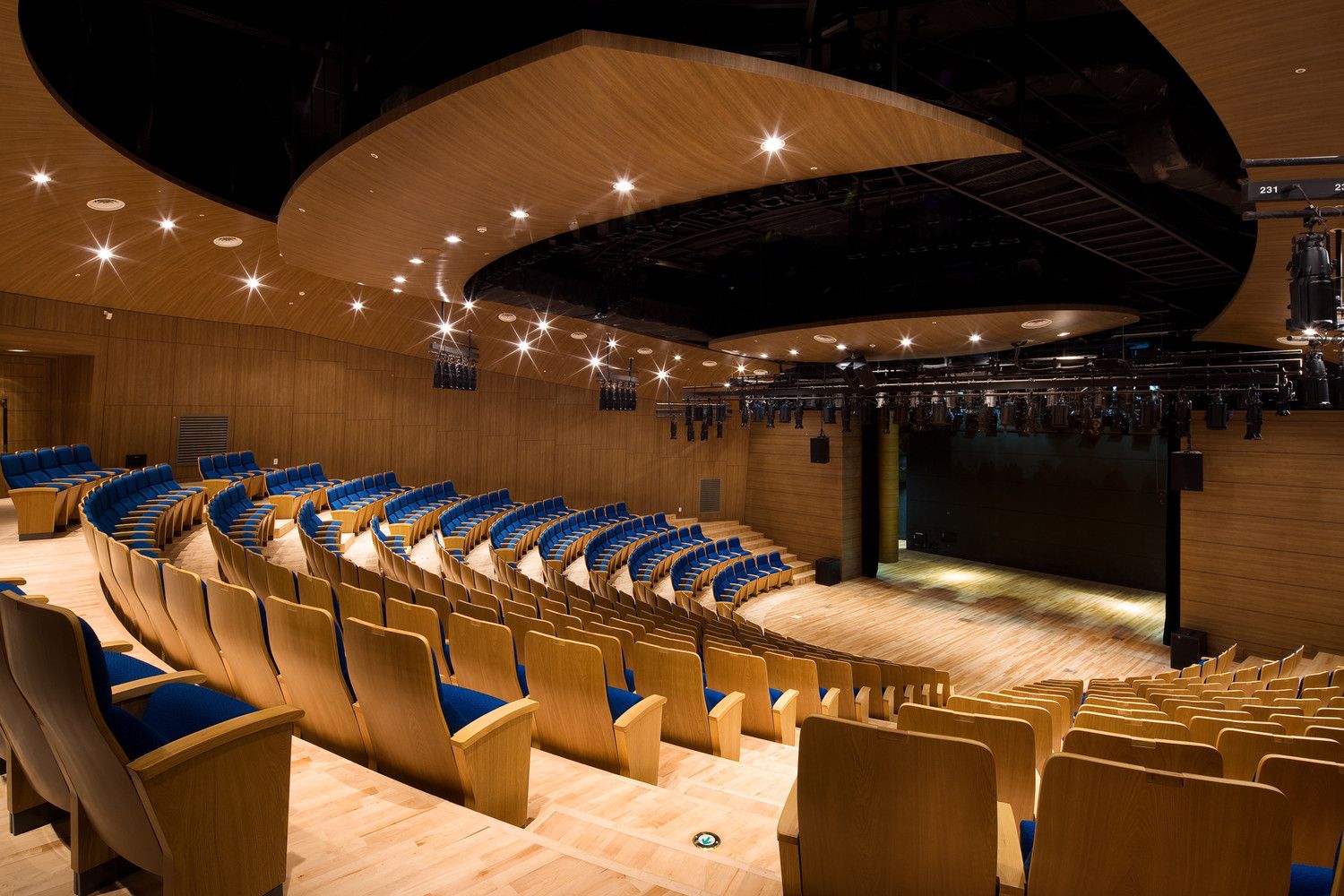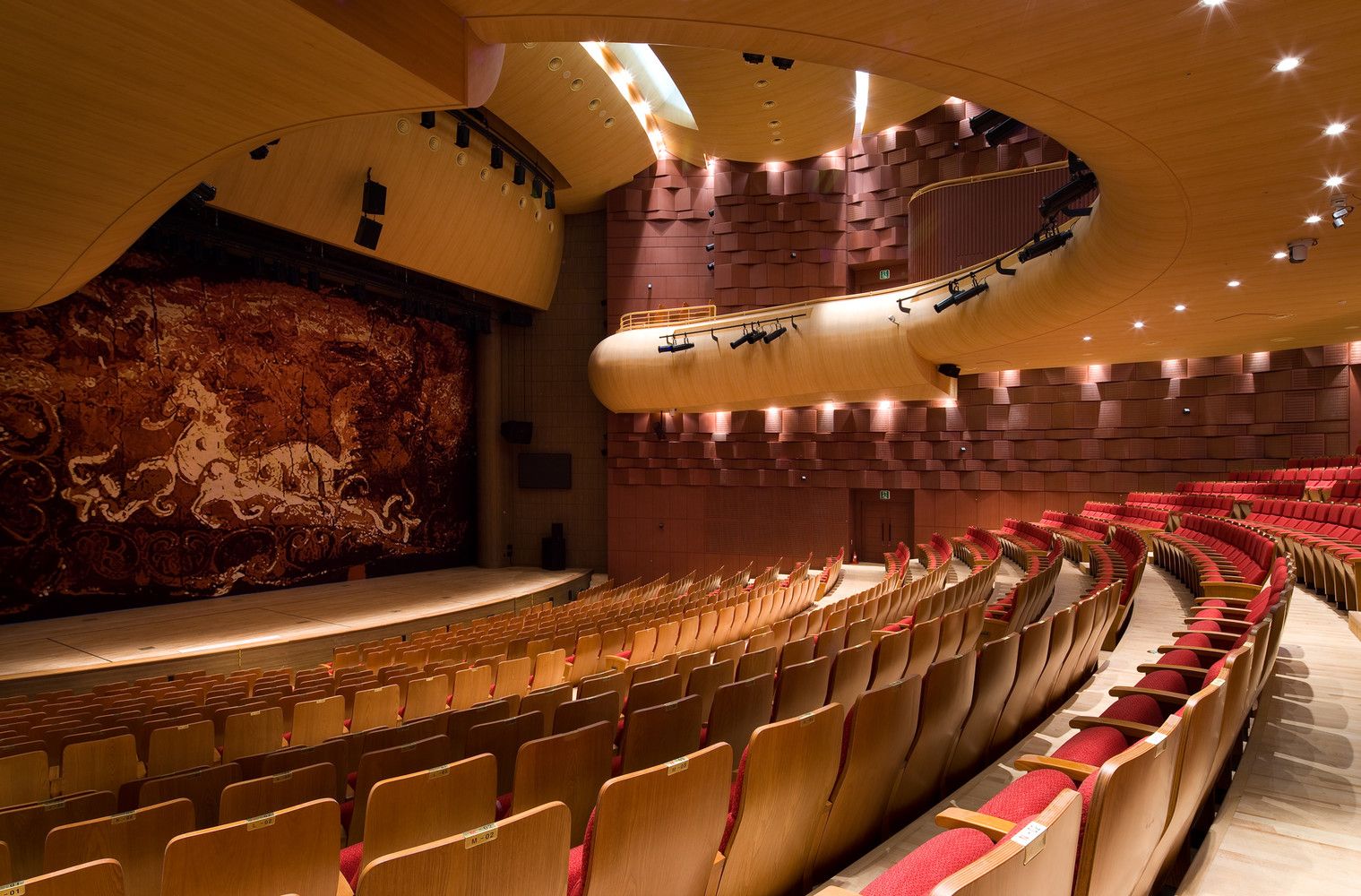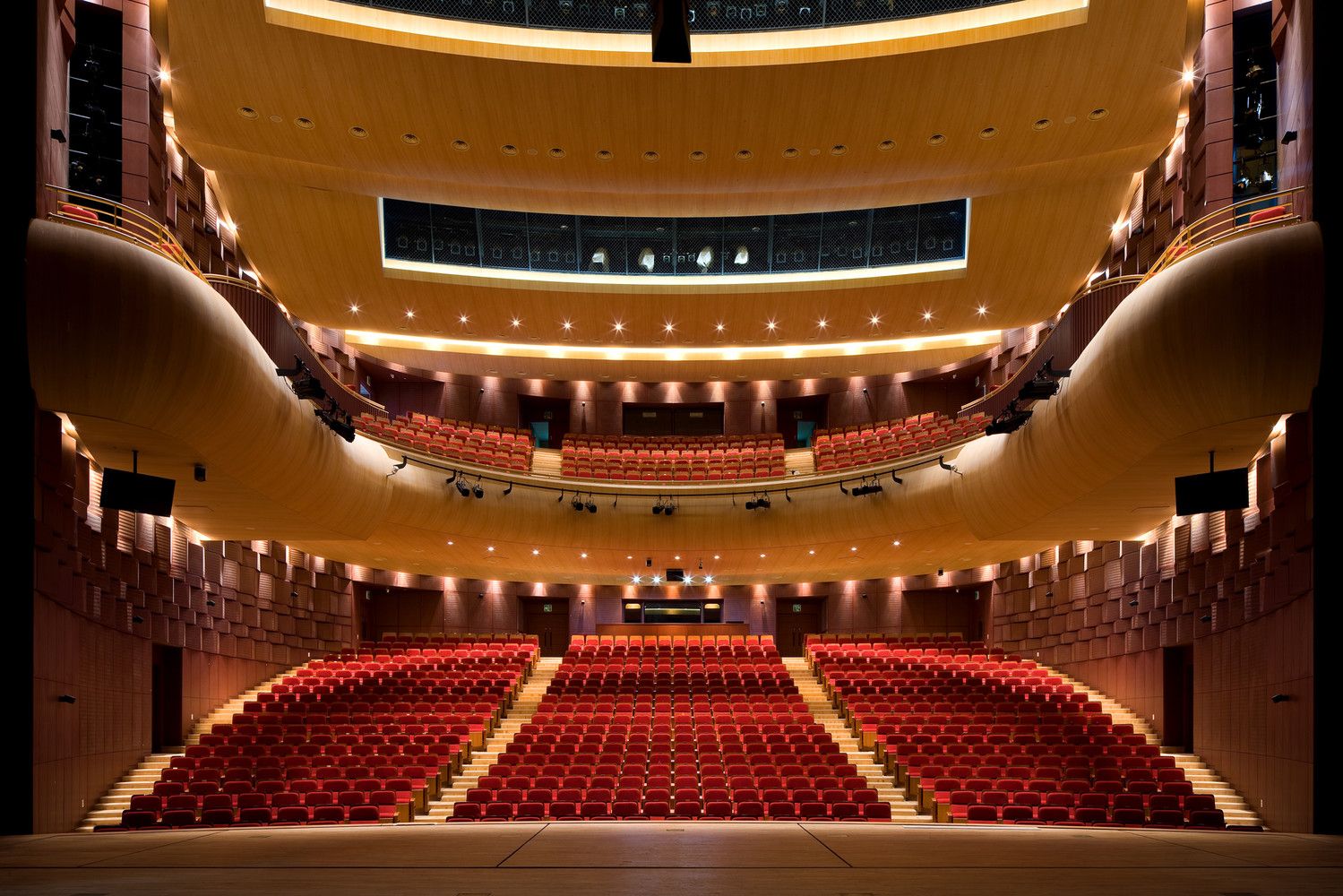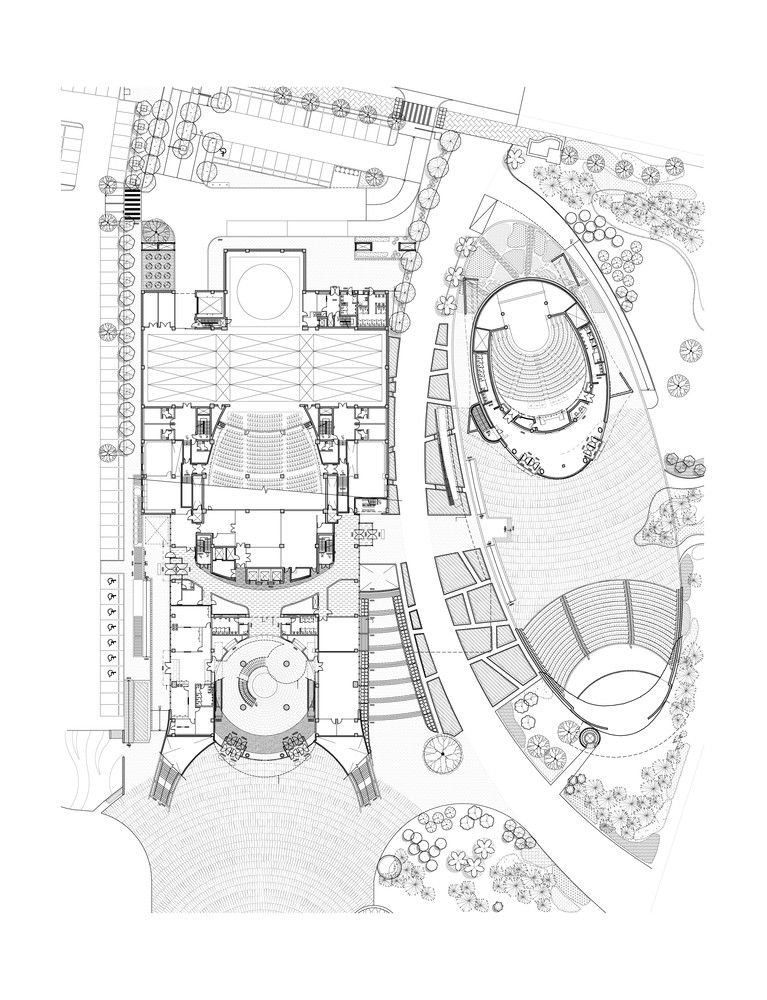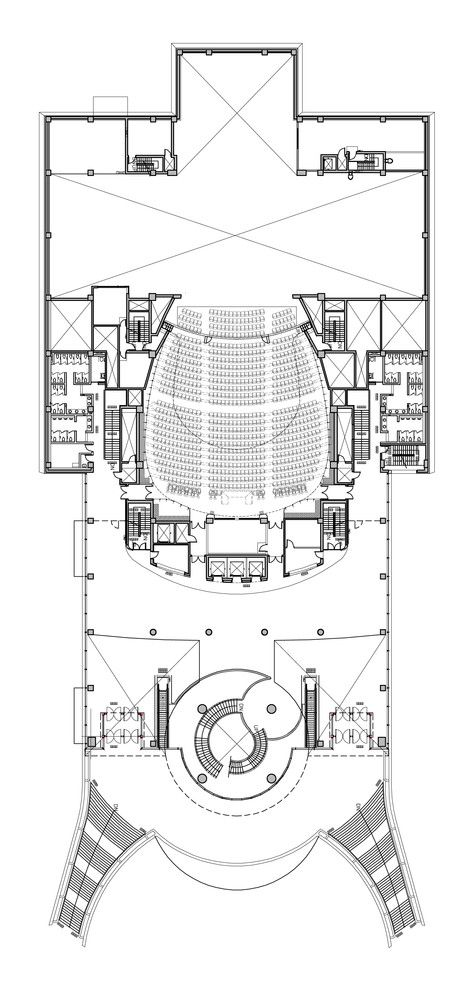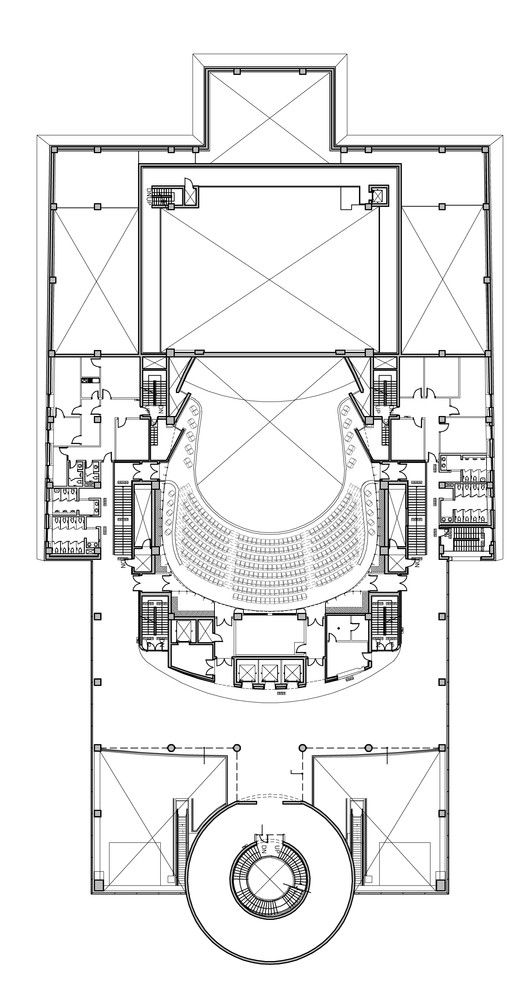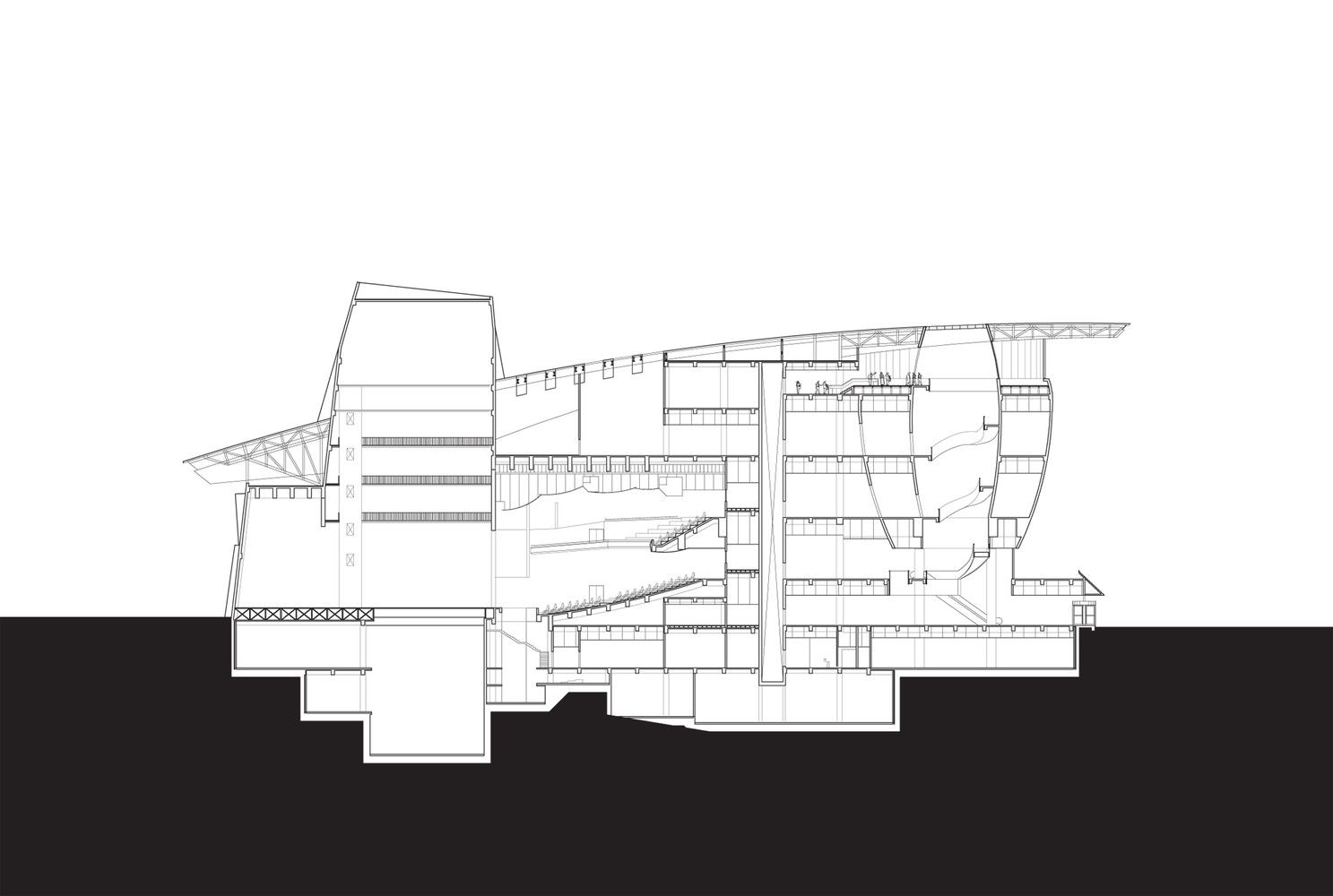Opening its doors in November of 2010 after being in construction for over two years, the Gyeongju Arts Center designed by Samoo Architects & Engineers occupies an area of 21,232 square meters and has become a dynamic new icon symbolizing the city of Gyeongju, which used to be the capital of ancient Kingdom of Shilla. By capitalizing on ideas behind simple traditional beauty in regards to architecture and combining that with a new future vision, this performance art center was designed. This five story building has two basement floors and stands to an equivalent height of a 13 story standard apartment building.
The building contains grand performance hall, small performance hall, exhibition chamber, outdoor performance stage, conference room, seminar room, and a toy library where a wide range of educational and participatory programs are held. The lower portion of the building contains the exhibition and performance spaces while the upper portions contain uses for education, experience, and welfare. By zoning the building in this manner, an independent circulation system and easier management of the facilities is created. The grand performance hall contains 1,100 seats, while the small performance hall has 356 seats, and the outdoor performance hall has 800 seats.
The curved mass in the front contains an exhibition space and is inspired by a modern reinterpretation of the smooth and elegant roofline in traditional architecture, and is reminiscent of the gentle curve of the royal tombs of the Shilla dynasty. Standing out in strong contrast to the transparent glass walls of the building, the curved mass is covered with white porcelain tiles. This architectural decision was designed to express the intentional hair cracks on the surface of earthen wares commonly found in Korean ceramics.
The large ceiling heights coupled with an abundance of produced through the skylight creates an open and pleasant ambience. The top floor observatory allows for visitors of the art center to enjoy a panoramic view of Gyeongju City. Finally, for the greatest flexibility and acoustical quality of the performance hall it is equipped with state-of-the-art facilities such as a revolving stage. The performance hall also contains an architectural acoustics diffusion system and stage equipment that enables maximum quality performances.
By
Courtesy of Samoo Architects & Engineers
Courtesy of Samoo Architects & Engineers
Courtesy of Samoo Architects & Engineers
Courtesy of Samoo Architects & Engineers
Courtesy of Samoo Architects & Engineers
Courtesy of Samoo Architects & Engineers
Courtesy of Samoo Architects & Engineers
Courtesy of Samoo Architects & Engineers
Courtesy of Samoo Architects & Engineers
Courtesy of Samoo Architects & Engineers
Courtesy of Samoo Architects & Engineers
Courtesy of Samoo Architects & Engineers
Courtesy of Samoo Architects & Engineers
Courtesy of Samoo Architects & Engineers
First Floor Plan
Second Floor Plan
Third Floor Plan
Section
Courtesy of Samoo Architects & Engineers – Photographers Young Chae Park, Young Chul Shin


